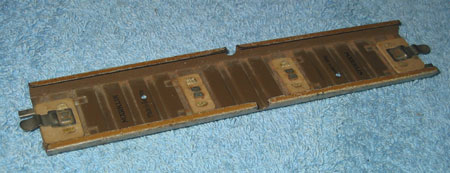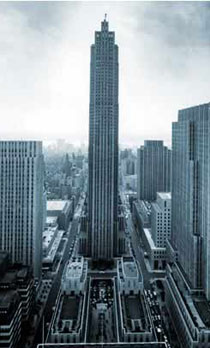| - MRR TUTORIALS - TRACKWORK - MÄRKLIN M-RAIL - HISTORY |
The history of Märklin M-rail |
|
|
  Märklin M-rail dated mid 30's |
|||
|
3600-series M-rail is being introduced |
 Rockefeller Center 1949 |
Märklin participated in April 1949 a great exhibition in the Rockefeller centre in New York. It was an initiative from the German military government to promote export. Märklin displayed in addition to their standard range a “super model series” which had isolated wheels and a 2-rail system running on the same rail geometry as the standard HO-series. Et
voilá: Modelgleis |
|
The plastic "C"-rails is introduced |
||
|
Text by Thomas Johnsson and Marcus S in Sweden. |